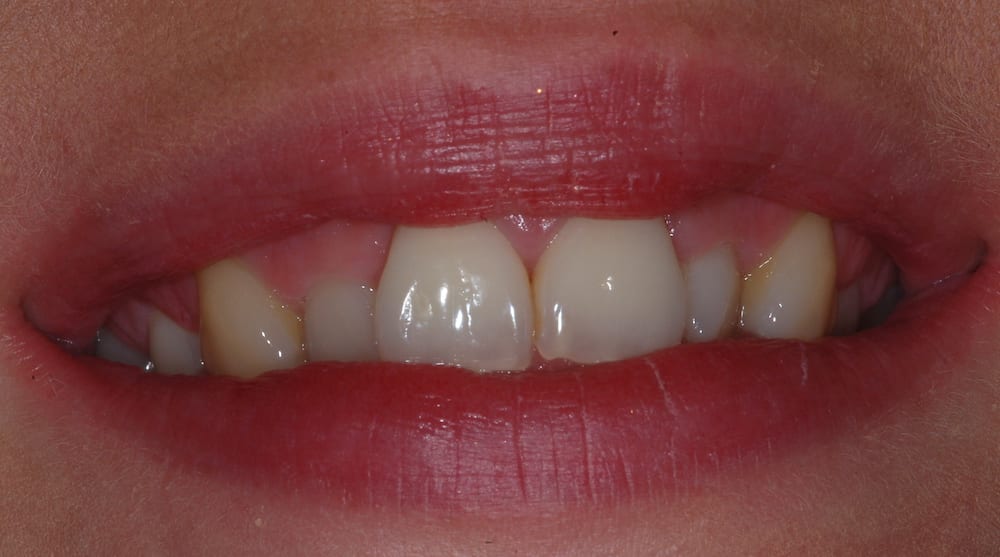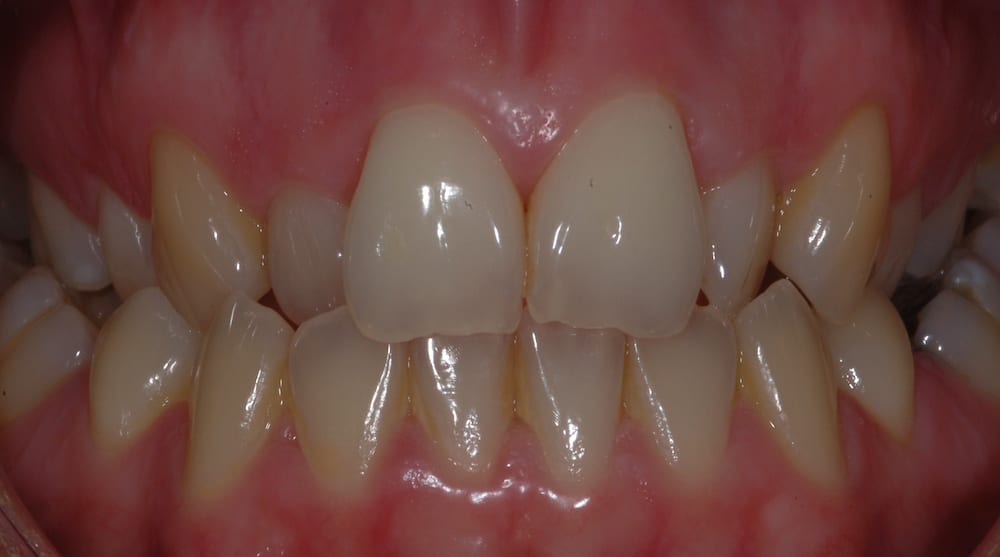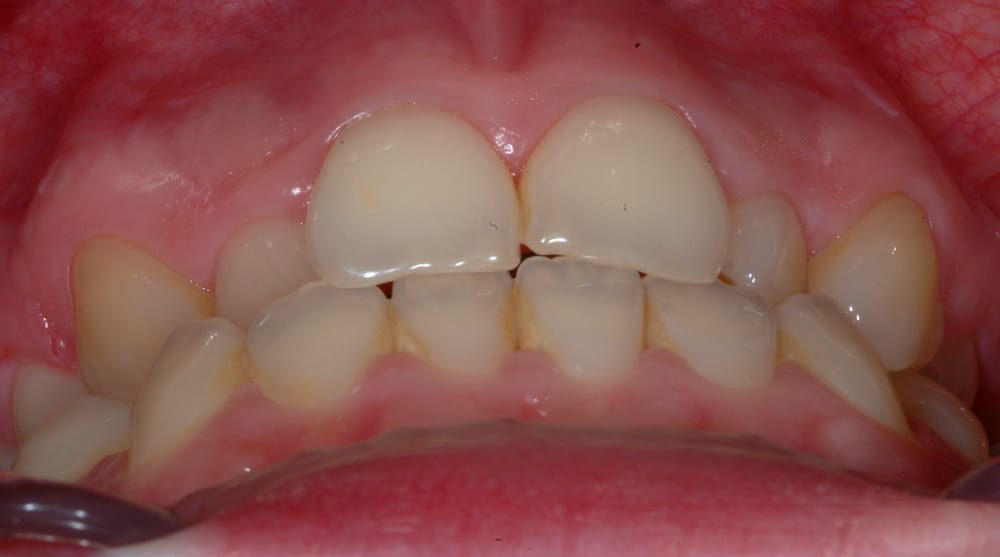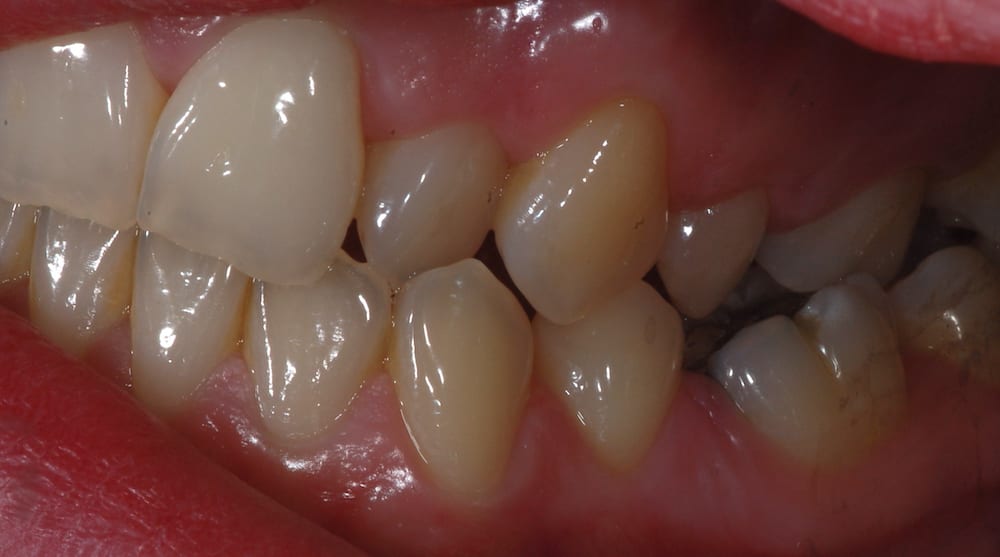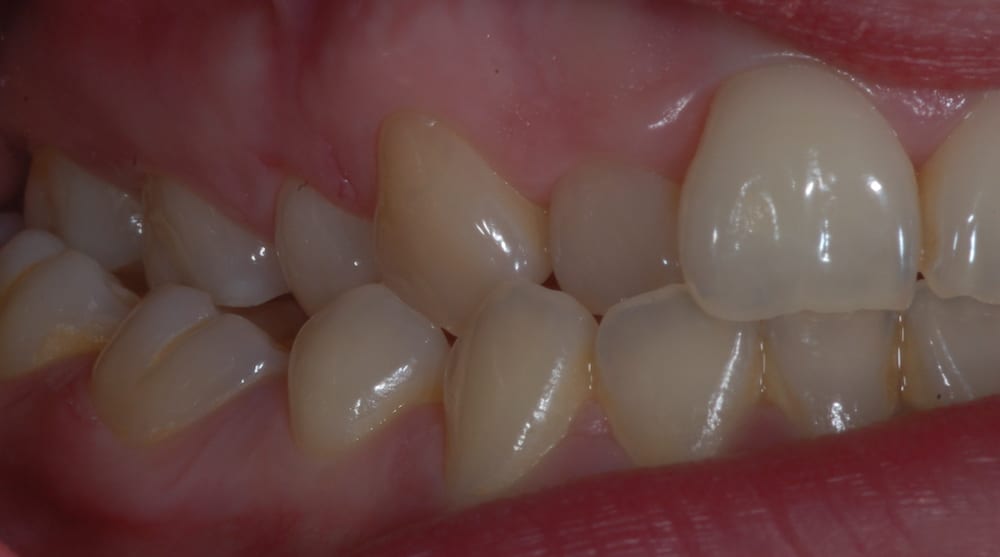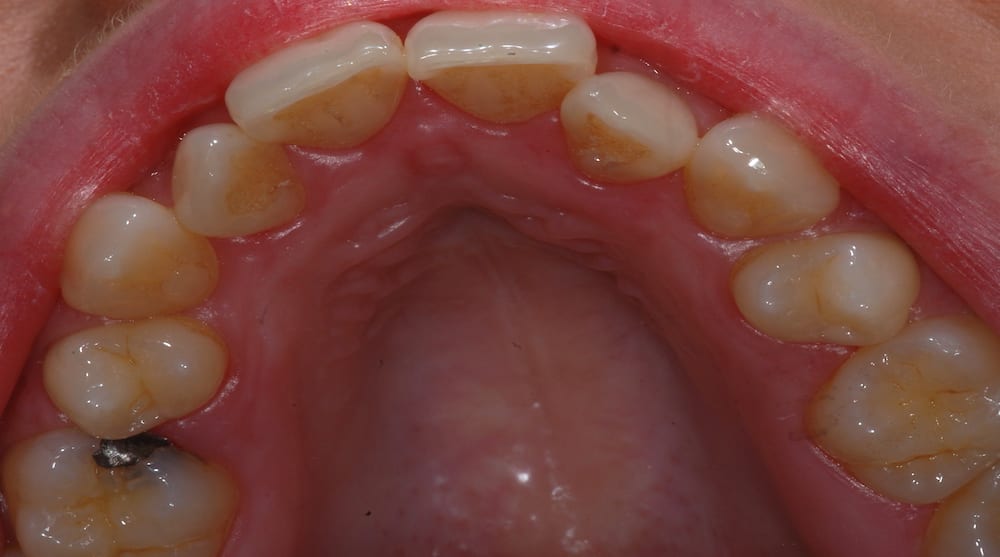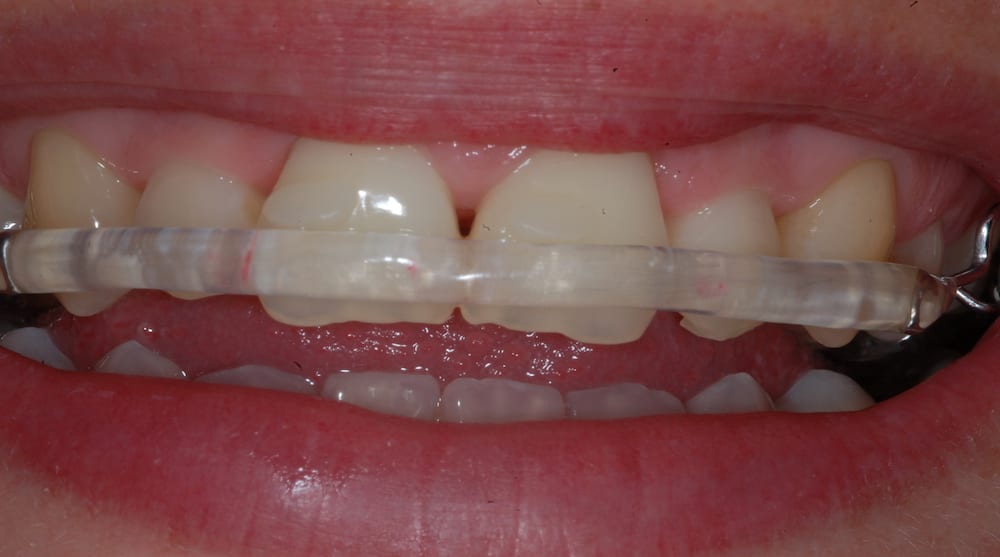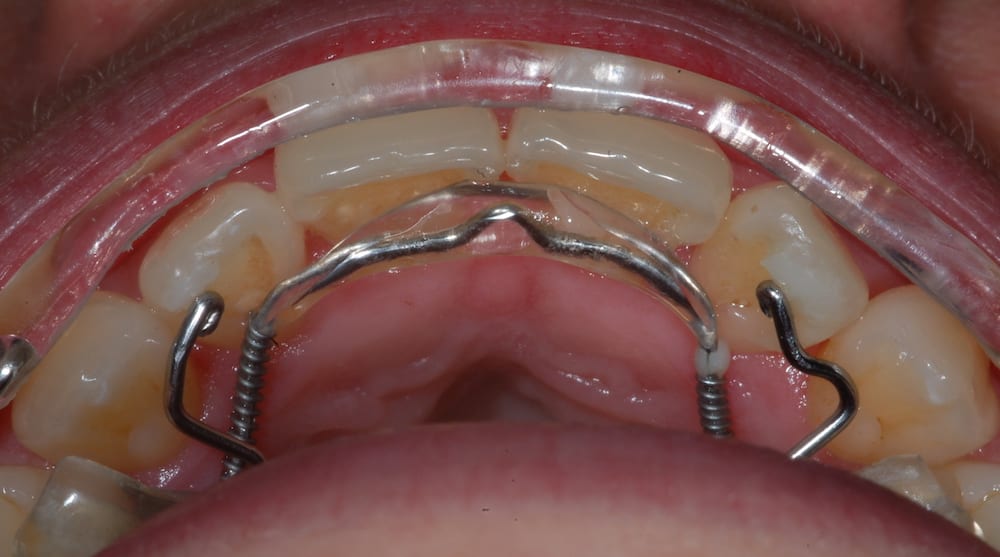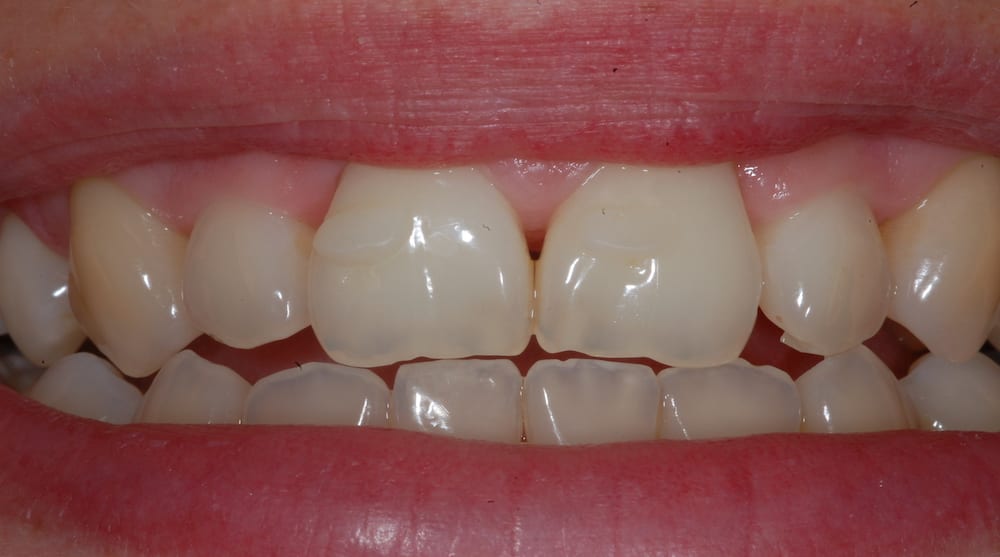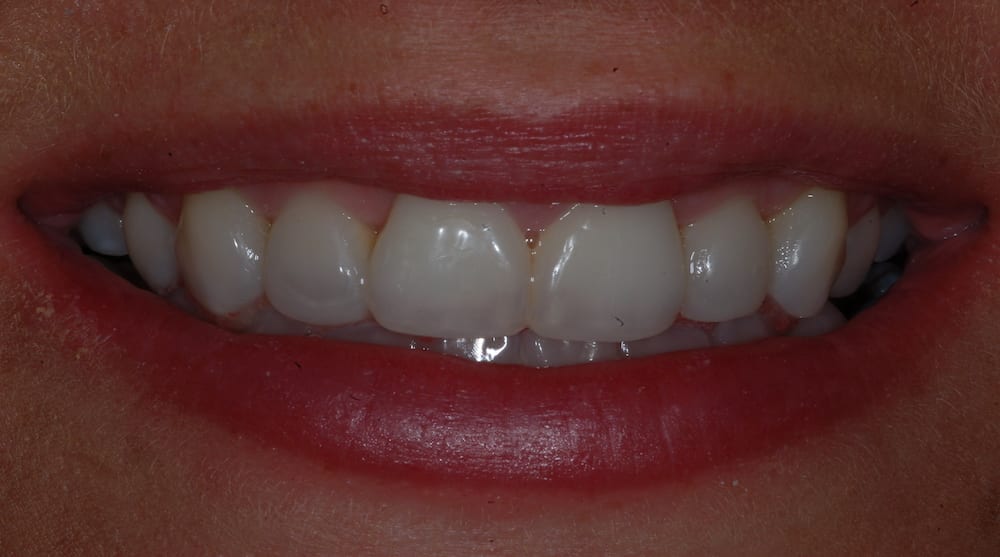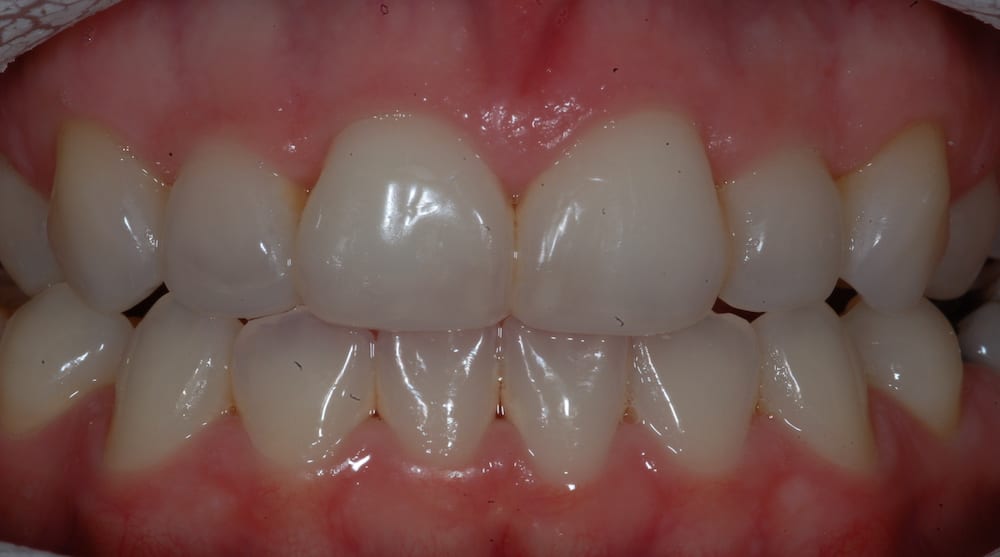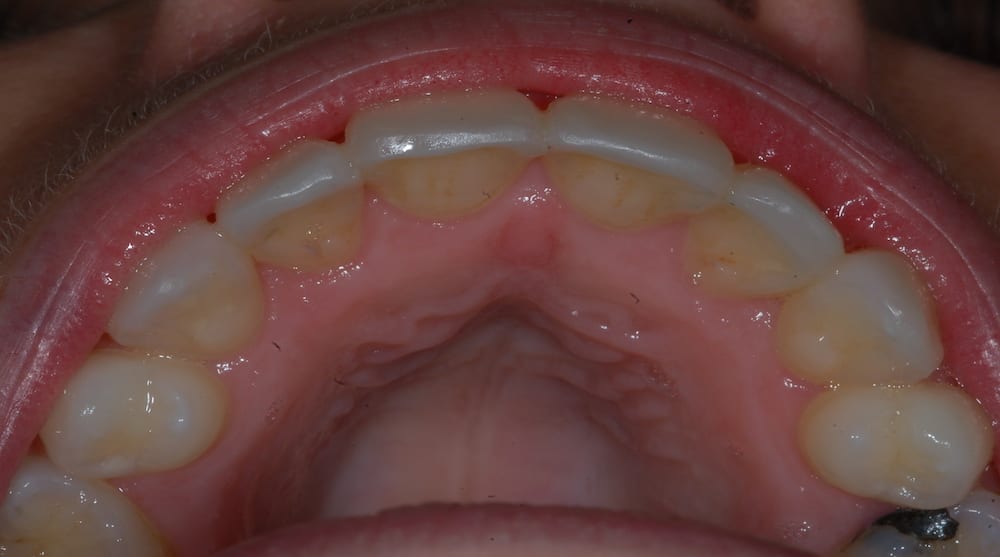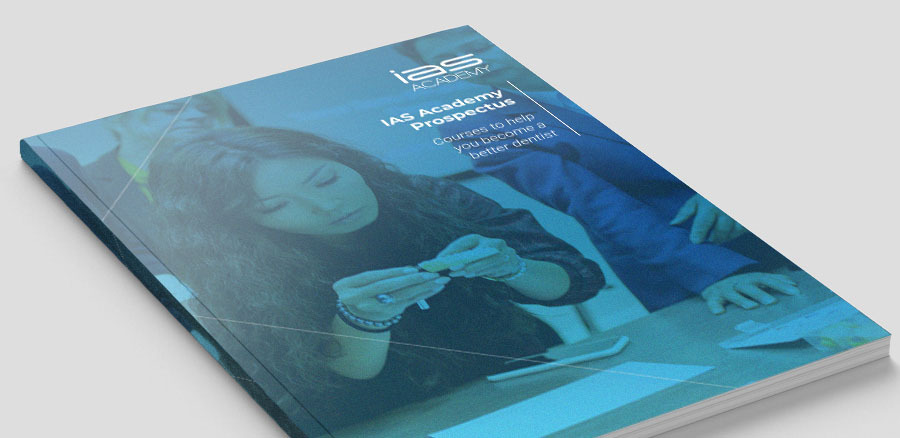Patient background
A 25-year-old female trainee dental nurse presented looking for orthodontic treatment, she was fit and healthy and there was nothing to contraindicate any procedures. As a dental professional she had a strong oral care routine and understood the necessity of maintaining this to achieve optimum outcomes. Overall, her oral hygiene was good, but there was some lower anterior calculus build up.
Clinical Observations
On presentation the patient had rotated laterals and a hidden, uneven gum line. She felt that the appearance of her dentition could be enhanced, as she was unhappy with the shape and size of the lateral teeth. The patient felt that they looked too small and also desired a whiter smile.
Her prior dental history included a few simple fillings as well as fixed orthodontic therapy, which she had undergone 8 years before. She was happy with the results at the time, but had since relapsed due to a lost retainer and not being aware of the importance of retention. This can often be the case, especially if the patient underwent orthodontic treatment in their teenage years.
Initial assessment
An initial assessment foundClass 1 incisors with a bilateral cross-bite and excursion guidance was indicated on non-working-side molars.
The patient was only concerned about the upper 3-3s, but was advised that full orthodontic assessment for a fixed brace was recommended in order to correct the bilateral cross-bite.
Having previously undergone full fixed therapy the patient didn’t want this again and specifically requested the Inman Aligner system based on past interest, and this was also seen as the more cost sensitive option.
She showed no symptoms of TMJ, but was warned that these may appear later in life. The patient was also advised that if she underwent this course of treatment now, in the future she could need a hard nocturnal bite-rising appliance to treat her occlusion.
Photographs and impressions were taken and posted onto the Inman Aligner website, and the Inman Aligner Spacewize+ crowding calculator was used to determine the case suitability for the appliance and aid with treatment planning. The case was assessed at Nimro Orthodontic Laboratory (the closest Inman Aligner certified lab) and the models were designed. We went on to use a pre-expansion device followed by an Inman Aligner with built-in expander appliance, and the overall amount of IPR was suggested by the Spacewise+ digital tool.
Treatment
The patient was highly compliant during the process and the treatment went smoothly. There were some initial problems with retention of the expansion appliance but this was helped with advice from the online forum. IPR was then performed over a number of appointments at regular intervals. This was carried out cautiously to minimise the risk of open gingival embrasures, especially at the contact point between the centrals and laterals.
Towards the end of the treatment there was a slight rotation of the upper left 2, which we adjusted with a set of clear aligners before performing the whitening procedure.
To address the patient’s concerns over the length and edge profile of her teeth, composite edge bonding of the incisors, canines and first premolars was completed. There was also some rotation of the premolars, which made them appear pointed, and we were able to further correct these with composite. For this, a putty guide stent was fabricated and then the tips were restored using the GC G-ænial layered composite technique.
On completion, the patient was given an essix retainer for maximum retention.
Conclusion
In the future we would like to complete a fixed palatal bonded retainer on the 4-4s, but the patient has been extremely diligent with her essix retainer and remains keen to monitor the progress and then use a fixed appliance later. As she works at the practice the patient is seen regularly, so if there were any hint of relapse, or of the retainer not being worn, this can be addressed immediately.
There was a slight “halo” on the upper right 2 due to conserving all of the enamel, which was very translucent. Providing a deeper infinity bevel may have reduced this, but the patient is very happy with the end result nonetheless.
The final outcome produced the desired excellent aesthetic, addressing all of the patient’s concerns including tooth position, gingival contour, shade and tooth dimensions. Throughout the process we were highly conservative of the tooth tissue, resulting in minimal damage. The composite edge bonding and whitening gave the optimal result and the aligner allowed the desired tooth positioning.


